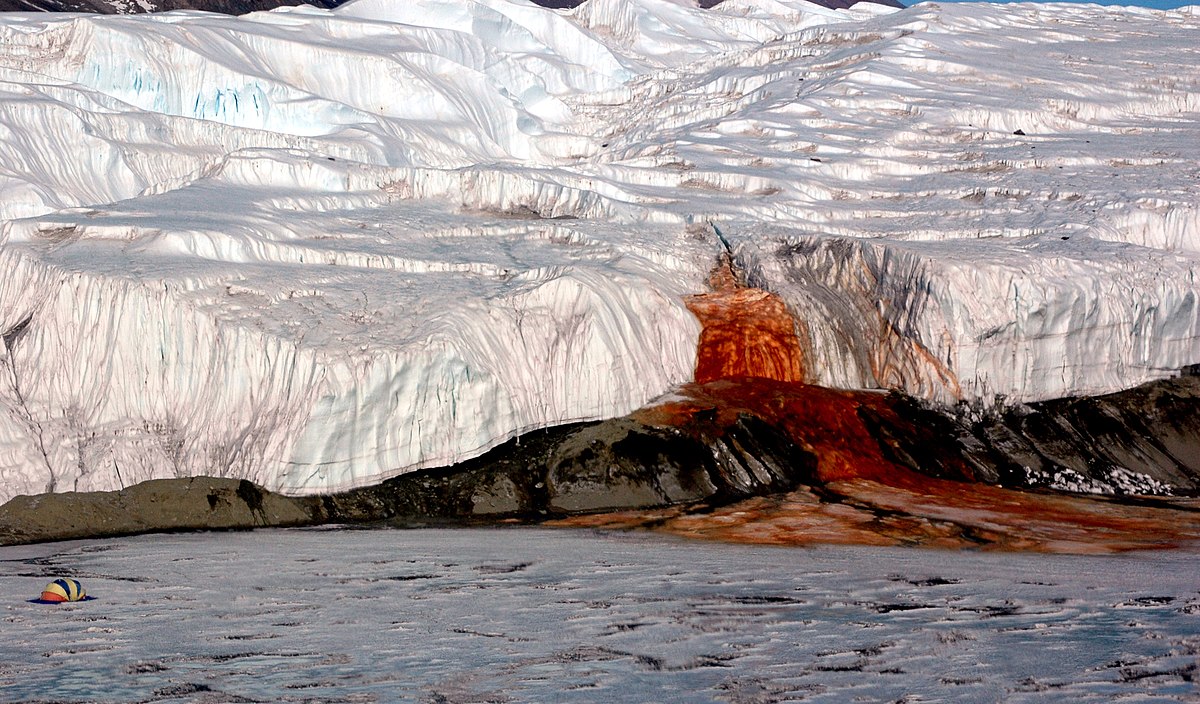
Have you ever wondered about the incredible forces shaping our planet? From the depths of the ocean to the highest mountain peaks, Earth's geological phenomena are nothing short of astonishing. Imagine a river older than the mountains it flows through or a fault line younger than the dinosaurs. Picture natural nuclear reactors that existed billions of years ago or a lake so alkaline it can ignite. These rare geological wonders reveal the dynamic and ever-changing nature of our world. Let's dive into 40 mind-blowing facts about Earth's rarest geological phenomena that will leave you in awe of our planet's history and power.
Key Takeaways:
- The Earth is full of ancient mysteries, from its 4.54 billion-year-old age to the intense heat of its core, reaching temperatures as hot as the sun's surface.
- Geological movements, ancient life, and unique minerals all contribute to the ever-changing and fascinating history of our planet, shaping its surface and natural wonders.
The Age and Heat of Earth
Our planet is full of mysteries, starting with its age and the intense heat within its core.
-
The Earth is 4.54 Billion Years Old: Scientists have determined Earth's age through radiometric dating of meteorite material. This ancient planet has supported life for billions of years.
-
The Earth's Inner Core is as Hot as the Sun's Surface: The inner core, made mostly of iron and nickel, reaches temperatures up to 9,000 degrees Fahrenheit. This heat is due to the core's slow cooling over billions of years.
Geological Movements and Transformations
The Earth's surface is constantly changing, shaped by various geological processes.
-
The San Andreas Fault in California is 800 Miles Long: This significant fault line stretches through California, causing numerous earthquakes and continuously altering the state's geology.
-
Continents Move as Fast as Fingernails Grow: Due to plate tectonics, continents shift about 2-3 centimeters per year, a pace comparable to the growth of human fingernails.
-
The Earth’s Core is Roughly 2.5 Years Younger than the Earth’s Surface: Gravitational time dilation causes the Earth's core to be slightly younger than its surface, with time passing differently at varying distances from massive objects.
Ancient Life and Natural Phenomena
Life on Earth and natural phenomena have fascinating histories and characteristics.
-
Early Cyanobacteria Changed Atmospheric Chemical Composition: Cyanobacteria, forming stromatolites, increased oxygen levels from 1% to 20% over 2 billion years, enabling life to thrive.
-
Sharks are Older than Trees: Sharks have existed for over 400 million years, predating the evolution of trees and making them one of the oldest living species.
-
Natural Nuclear Reactors Existed in Gabon: Around 2 billion years ago, natural nuclear reactors in Gabon's Oklo region operated for hundreds of thousands of years before shutting down.
Unique Minerals and Rocks
The Earth is home to unique minerals and rock formations that tell stories of its past.
-
Quartz Can Spark and Smell Like Fire: When struck, quartz can emit sparks and a fire-like smell due to the separation of its silicon dioxide molecules' unbalanced poles.
-
Bridgmanite, the Most Common Mineral, Was Named in 2014: Bridgmanite, a high-pressure form of silicate found in the Earth's lower mantle, was officially named only in 2014.
-
Greenstones Formed During the Archean and Proterozoic Eras: These ultramafic rocks, also known as komatiites, played a crucial role in early plate tectonics and volcanism.
Rivers, Mountains, and Caves
Rivers, mountains, and caves offer glimpses into the Earth's geological history.
-
The Susquehanna River is One of the Oldest Rivers: Dating back 320-340 million years, the Susquehanna River predates the mountain ridges it flows through.
-
The Summit of Mount Everest is Composed of Marine Limestone: The highest peak on Earth consists of marine limestone, formed from ancient sea sediments uplifted over time.
-
Crystal Cave Boasts Massive Selenite Crystals: In Mexico, Crystal Cave features selenite crystals up to 40 feet long, formed due to stable high temperatures from underlying magma.
Extraordinary Geological Sites
Some geological sites are so unique they seem almost otherworldly.
-
The Door to Hell in Turkmenistan: This natural gas field has been burning since 1971, after Soviet geologists set it on fire to prevent poisonous gas inhalation.
-
Yellowstone Fumaroles Display Geochemistry: Fumaroles in Yellowstone National Park release gases and deposit minerals, creating colorful and geochemically rich displays.
-
Mount Roraima is a Tepui in Venezuela: This flat-topped mountain, formed through erosion over millions of years, is known for its diverse flora and fauna.
Natural Wonders and Phenomena
Nature's wonders and phenomena continue to amaze and inspire.
-
Antelope Canyon is an Eroded Slot Canyon: Carved by flash floods, Antelope Canyon's sandstone walls are smoothed by a mixture of water and sand.
-
The Cretaceous-Paleogene Boundary Represents a Massive Extinction Event: Marked by high levels of iridium, this boundary signifies the extinction of non-avian dinosaurs 66 million years ago.
-
Travertine Deposits at Pamukkale: Formed by hot springs, Pamukkale's travertine deposits create stunning white terraces recognized as a World Heritage Site.
Rare and Bizarre Geological Phenomena
Some geological phenomena are so rare and bizarre they defy belief.
-
Volcanic Lightning During Eruptions: Static electricity from ash friction during eruptions creates volcanic lightning, a rare and awe-inspiring sight.
-
Halos Formed by Ice Crystals: Rings of light, or halos, form when ice crystals in high clouds bend sunlight into a perfect circle.
-
Fire Tornadoes Turn Active Fires into Fiery Columns: Twisting wind patterns can turn active fires into fire tornadoes, creating mesmerizing displays of fire and smoke.
-
Penitentes Formed by Sunlight Vaporizing Ice: These ice spikes, found in high altitudes, form when sunlight vaporizes ice into water vapor.
Unique Geological Formations
The Earth boasts unique geological formations that captivate the imagination.
-
Pele’s Hair: Lava Droplets Stretched by Wind: Strong winds stretch lava droplets into long glassy strands, creating fragile and unique formations known as Pele’s hair.
-
The Eye of the Sahara: A Rock Formation in Mauritania: Believed to be a remnant of a massive dome, this rock formation is a result of tectonic activity and erosion.
-
Snake Dens in Manitoba: Thousands of Harmless Snakes: Limestone dens in Manitoba house thousands of harmless snakes seeking shelter and protection.
-
Lake Natron: A Super-Alkaline Lake in Tanzania: This lake's extreme conditions, caused by volcanic activity, support unique wildlife adapted to its harsh environment.
Phenomena in the Sky and Water
The sky and water reveal some of the most fascinating geological phenomena.
-
Waterspouts: Whirling Columns of Wind: Formed by the interaction between wind and water, waterspouts are mesmerizing columns extending from water to the sky.
-
Pyrocumulonimbus Clouds Generate Lightning: These thunderstorms, formed above wildfires, generate their own lightning and can spread fire and ash over large areas.
-
Lake Maracaibo Lightning: Frequent Lightning Strikes: Due to unique geography and atmospheric conditions, Lake Maracaibo in Venezuela experiences frequent lightning strikes.
Unique Geological Ecosystems
Some ecosystems are shaped by unique geological features and processes.
-
Pando Grove: An Interconnected Grove of Quaking Aspen Trees: This grove, considered one of the largest organisms, grows together as a single entity due to its unique root system.
-
Blood Falls in Antarctica: Colored by iron-rich water, Blood Falls is inhabited by unique bacteria and results from the interaction between glacial ice and iron-rich sediments.
-
Rainbow Eucalyptus: Vibrantly Colored Tree Bark: This tree sheds its bark to reveal a rainbow of hues, creating a multicolored appearance due to its unique growth pattern.
Geological Phenomena and Environmental Concerns
Some geological phenomena pose environmental concerns due to their unique characteristics.
-
Thermokarst Lakes Can Be Ignited: These methane-rich lakes, found in permafrost regions, can release and ignite methane gas, creating dangerous environments.
-
Periodical Cicadas Emerge Every 13 or 17 Years: These insects spend most of their lives underground, emerging in large numbers every 13 or 17 years to mate and lay eggs.
-
Crystal Cave Boasts Massive Selenite Crystals: In Mexico, Crystal Cave features selenite crystals up to 40 feet long, formed due to stable high temperatures from underlying magma.
-
Travertine Deposits at Pamukkale: Formed by hot springs, Pamukkale's travertine deposits create stunning white terraces recognized as a World Heritage Site.
-
Volcanic Lightning During Eruptions: Static electricity from ash friction during eruptions creates volcanic lightning, a rare and awe-inspiring sight.
-
Halos Formed by Ice Crystals: Rings of light, or halos, form when ice crystals in high clouds bend sunlight into a perfect circle.
The Wonders of Earth's Geology
Earth's geological phenomena are nothing short of mind-blowing. From the ancient cyanobacteria that transformed our atmosphere to the San Andreas Fault shaping California, these natural wonders tell the story of our planet's dynamic history. Mount Everest's marine limestone summit and the Door to Hell in Turkmenistan showcase the incredible forces at play beneath our feet. Volcanic lightning, fire tornadoes, and pyrocumulonimbus clouds remind us of nature's raw power. Meanwhile, Crystal Cave's giant selenite crystals and Pamukkale's travertine terraces highlight the beauty hidden within the Earth. Each fact, from the Susquehanna River's ancient flow to the Eye of the Sahara's unique formation, offers a glimpse into the complex processes that have shaped our world. These geological marvels inspire awe and curiosity, reminding us of the ever-changing and fascinating nature of our planet.
Frequently Asked Questions
Was this page helpful?
Our commitment to delivering trustworthy and engaging content is at the heart of what we do. Each fact on our site is contributed by real users like you, bringing a wealth of diverse insights and information. To ensure the highest standards of accuracy and reliability, our dedicated editors meticulously review each submission. This process guarantees that the facts we share are not only fascinating but also credible. Trust in our commitment to quality and authenticity as you explore and learn with us.


